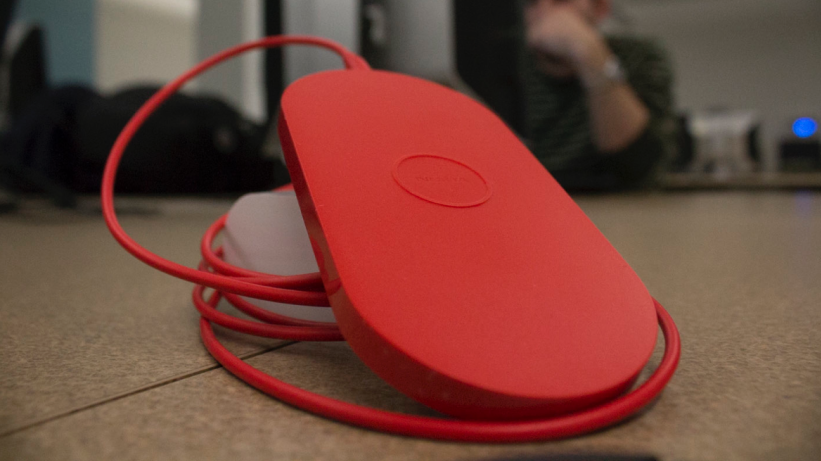 The concept is simple. Simply place your Qi (pronounced “chee”) enabled phone onto a charging pad and it will start charging! This is accomplished with inductive charging, which uses heat to wirelessly charge your mobile device and may even produce a little heat. Most chargers have a light that turns on when the phone is correctly placed and your phone will produce a sound that signifies charging.
The concept is simple. Simply place your Qi (pronounced “chee”) enabled phone onto a charging pad and it will start charging! This is accomplished with inductive charging, which uses heat to wirelessly charge your mobile device and may even produce a little heat. Most chargers have a light that turns on when the phone is correctly placed and your phone will produce a sound that signifies charging.
Who is this for?
The Qi can be used by anyone! Everyone can benefit from this technology because it is simple to use and it saves you time (a small amount of time you may argue, but every second does count). Qi chargers will help organize cable-cluttered tables by removing at least one USB charger. Wireless charging will also eliminate the wear and tear of your device’s USB ports from the daily plugging and unplugging of cables.
This interface requires 2 objects: a receiver built into a Qi enabled phone or tablet, and a charging pad. The charging pad has one or more magnetic induction coils built in. The more coils, the more efficient the wireless charger will be. A list below names all the phones (and tablets) that have built-in Qi receivers. You may be surprised to see what phones are on the list. If your phone is not on the list, don’t worry, many popular phones have adapters that can easily and quickly allow your device to be Qi compatible.
Qi wireless technology is quickly being built into popular and convenient locations, such as The Coffee Bean and Tea Leaf stores in major cities, Virgin Atlantic Airplanes, New York’s JFK Airport, Tulsa International Airport, London Heathrow Airport, and a number of locations in Japan. Newer cars, such as the Toyota Avalon Limited offers an optional Qi charger built into the center console as well.
How much does this cost?
The price of the Qi charger may turn off some customers. While there are foreign chargers that cost as little as $15 shipped from China, quality Qi chargers from Nokia, Energizer, LG, Samsung, and TYLT will run you anywhere from $25 to $70.
Last Notes
Newer Qi chargers are able to charge your phone in the same amount of time it takes to charge with the cable provided with your phone. From personal testing, I have found that Qi charging is 3 to 5 percent less effective than charging from the original manufacturer’s cable. In most cases, this adds an additional 5 to 15 minutes to the overall charging time, which is hardly noticeable.
Tek Recommended: The TYLT Vu ($70 @ tylt.com) is designed to turn your phone into a nightstand or to allow you to watch movies in landscape mode while offering superior charging capabilities and build quality. I have found this to be one of the greatest advantages of Qi Charging. Even if your phone has a case, the Qi charger will still be able to charge your phone. Manufactures claim that your phone can be between 5 or 12 mm away from the charger for it still work.
Qi Built In:
- HTC Droid DNA
- HTC Windows 8X (Verizon Only)
- LG Nexus 4
- LG Nexus 5
- LG Spectrum
- LG G2 (Verizon Only)
- LG Lucid 2
- Nokia Lumia 920
- Nokia Lumia 928
- Nokia Lumia 822
- Motorola Droid Mini
- Motorola Droid Maxx
- BlackBerry Z30
- Kyocera Hydro Elite
- Asus Nexus 7 (Tablet)
Devices requiring adapters:
- iPhone 4, 4S, 5, 5S
- HTC Incredible 2
- HTC Rezound
- HTC Thunderbolt
- LG Optimus 2
- LG Revolution
- Motorola Droid 3
- Motorola Droid 4
- Nokia Lumia
- Nokia Lumia 720, 810, 820, 822, 925
- Samsung Galaxy S3
- Samsung Galaxy S4
- Samsung Galaxy Note II

